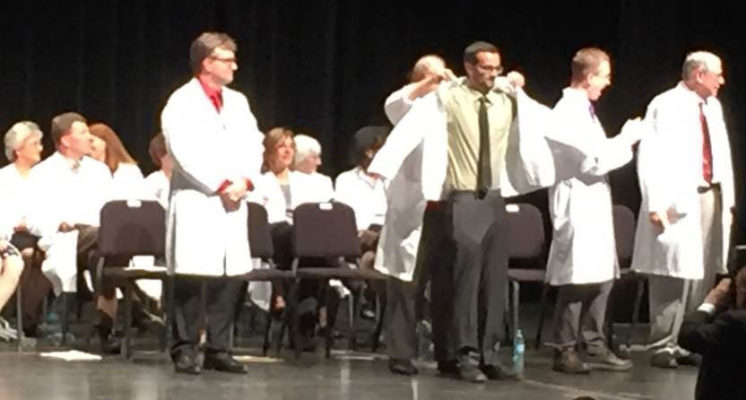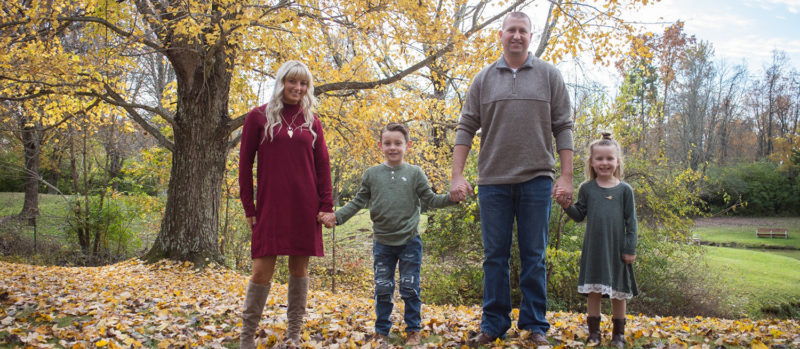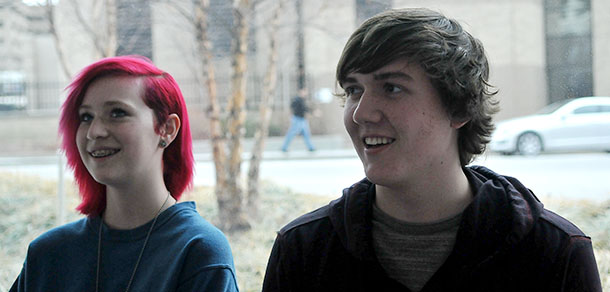When I first met Dr. Garcia at age 13, I was known as “torpedo chest” at the community pool because of the large dent in the center of my torso, and still a long way away from considering my now chosen career path.
I have a condition called pectus excavatum, which is a depression in the chest due to an abnormal growth of the cartilage that attaches the breastbone to the ribs. It occurs one in 500 to 1,000 children and can range from slight to severe – and the severe version can impact heart and lung function.
Some forms of pectus need surgical repair, some don’t, and some need thoughtful watching to make sure that complications don’t arise.
Dr. Garcia recommended surgical repair for me because my reduced chest cavity could potentially cause health complications as I aged, such as breathing difficulties.
My experience with Dr. Garcia has, in large part, influenced my decision to become a doctor.
From the moment I heard that surgical repair was a good solution for me, I was filled with trepidation. I think most people are apprehensive when they consider surgery, but as a 13 year old, it was a lot to take in.
Dr. Garcia made me feel comfortable with the decision. He was explicit about what was going to happen, so that I knew what to expect. He drew lots of pictures. And I’m guessing he had something to do with the creation of this recently developed animation of the surgical repair, because he is such a champion for patients’ understanding of what’s going to happen to them.
I think this is where things may have started to click for me as I started to think about what I wanted to do after high school. He made me comfortable in general – he built a relationship with me. He learned about me. I learned about him. He would give me “homework” assignments to bring back to the next appointment (such as telling him three jokes), to take my mind off of what was going on and to look forward to appointments rather than dreading them.
During my four-year pectus journey – from the initial evaluation, to having bars surgically placed in my chest, to the recovery and scars – Dr. Garcia showed me that he wasn’t just a doctor. He was a partner, a believer and a supporter. And his unbridled enthusiasm inspired me to pursue a degree in medicine.
So here I am, entering my first year of medical school (that’s me in the photo above during my white coat ceremony!) at The Ohio State University, and I have Dr. Garcia as an example of the type of doctor that I’d like to be. He allowed me to shadow him a couple of times, so that I could see what he does and confirm that I’m making the right choice for me.
During our time together, I watched the impact of the connections he developed with patients. They relax, and when they relax, they’re more likely to listen, learn, and feel more at ease with a procedure that they may need.
And so I’ve realized that having pectus could potentially help me connect with my future patients. Having pectus has taught me how important patient education is – it was a lot easier to deal with my condition and the impending surgery once I understood what was going to happen to me. It’s also taught me that a patient’s acceptance of his or her condition might help them stay in a positive place mentally. I embraced my condition – I liked the dent in my chest and thought it made me unique – and I hope that sharing my experience with my future patients might help them come to a place of self-acceptance too.
As I move one step closer to realizing my career goal this fall, Dr. Garcia’s lessons will be in the back of my mind. I will strive to have a positive impact on others’ lives as he did mine, teach them in a way that he taught me, and perhaps learn a few new jokes along the way.
We are available to answer your questions about pectus excavatum at 1-800-344-2462, extension 3-1062. To learn more about the Pectus Program, please visit our webpage.




Hi Nick,
I’d love to chat with you about a few things. I’m in a very similar situation as you, having had PE and now in Medical School. robertseisinger@gmail.com